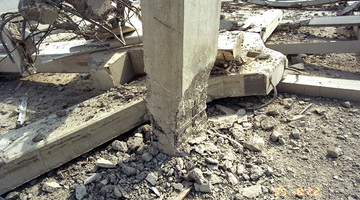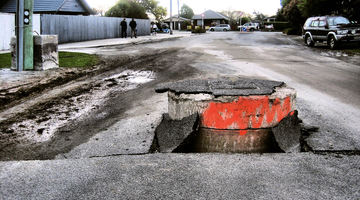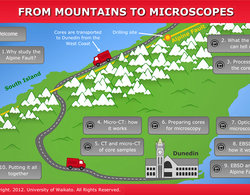

About 14,000 earthquakes are recorded in and around Aotearoa New Zealand every year. Canterbury’s 7.1 and Kaikōura's 7.8 magnitude earthquakes and subsequent aftershocks show the constant threat ...
READ MORE

This online PD session, recorded on 18 February 2015, focuses on using Science Learning Hub earthquake resources to plan an Earth and Space science unit. It models how a variety of resources can ...
READ MORE

Are you looking for ways to teach forces? If you’re new to the Science Learning Hub, you may want to start with our introductory video on teaching physics. Help, I’m teaching physics Discover ...
READ MORE

Shaky New Zealand About 14,000 earthquakes are recorded in and around New Zealand every year. Fortunately, most of them are too small for us to feel at the surface. However, many of us have felt ...
READ MORE

During tectonic plate movements, strain is placed on the land around us. The strained materials deform in one way or another as energy is released by earthquakes, faults and folds. These forces ...
READ MORE

Field: Seismic Engineering. Organisation: Robinson Seismic Limited. Rights: The University of Waikato Te Whare Wānanga o Waikato Dr Bill Robinson Dr Bill Robinson was one of New Zealand's leading ...
READ MORE

The series of activities described below was designed to help students develop an understanding about earthquakes in New Zealand, including why we get them and how we measure them. The world of ...
READ MORE

In this activity, students take on the roles of seismologists, vulcanologists and geographers, using maps to look for patterns in the worldwide distribution of earthquakes, volcanoes and ...
READ MORE

In this activity, students use maps to plot a graph of earthquakes under New Zealand to show the shape of the North Island subduction zone and compare this to the distribution of earthquakes in ...
READ MORE
Slow slips are silent earthquakes that occur below the Earth’s surface over a large area, unlike traditional earthquakes we feel that occur in a relatively small region. Before discovering slow ...
READ MORE
Chris Gannon and John Meyer from Robinson Seismic explain how the Ro-Glider works. Lead rubber bearings aren’t suitable for light structures, so Robinson Seismic has developed the Ro-Glider to ...
READ MORE
Dr Stefano Pampanin from the University of Canterbury believes seismic engineering relies on the merging of knowledge from many scientific areas, using an interdisciplinary approach and combining ...
READ MORE

In this interactive follow a core sample as it makes its journey from the Alpine Fault to microscopic examination. Click on the labels for more information. Select here to view the full ...
READ MORE

This is the slideshow that supports the Exploring natural hazards PLD webinar. Use the Slideshow menu for further options, including view full screen, and go here for the download option.
READ MORE

This interactive introduces and houses resources developed by Magma Drillers Save Planet Earth – a University of Canterbury project funded by Curious Minds. Select here to view the full ...
READ MORE